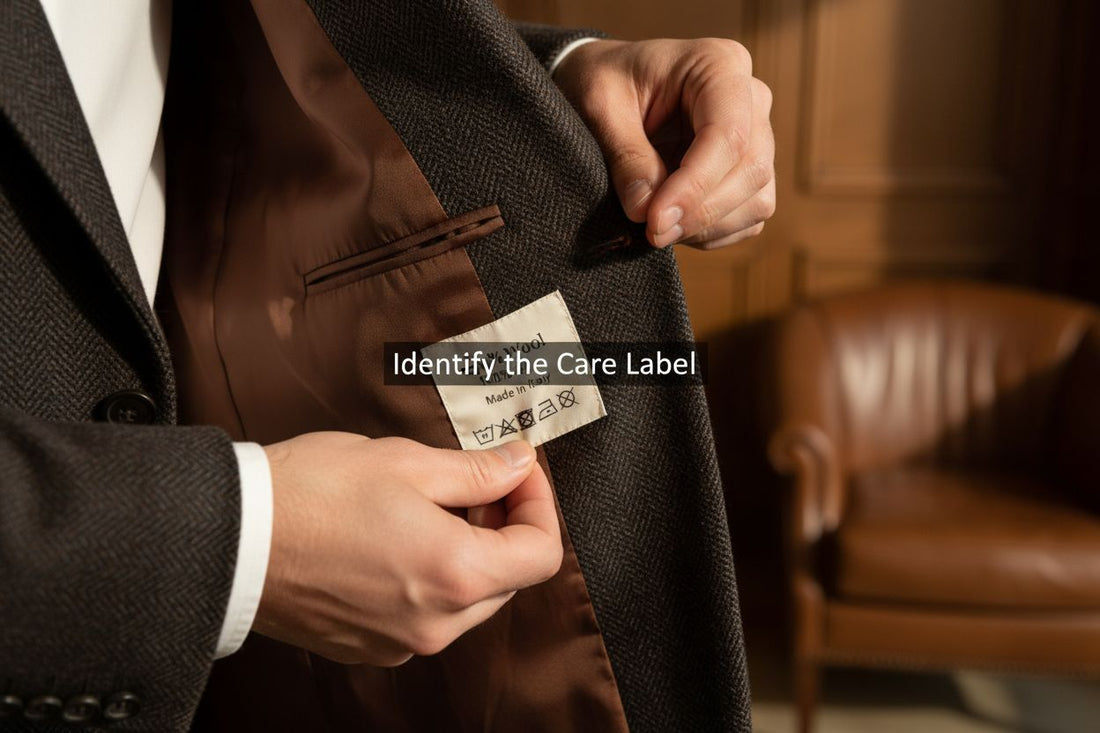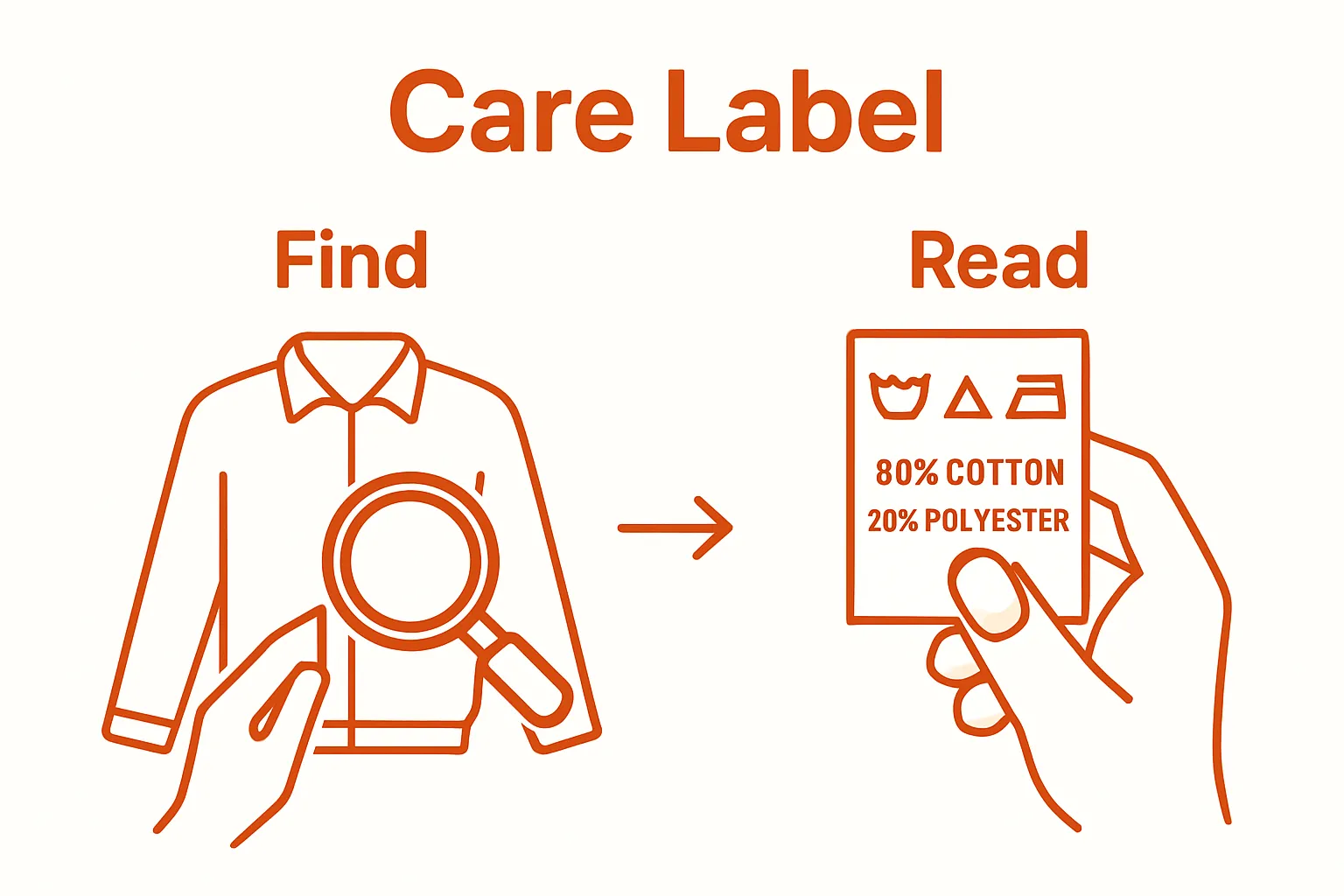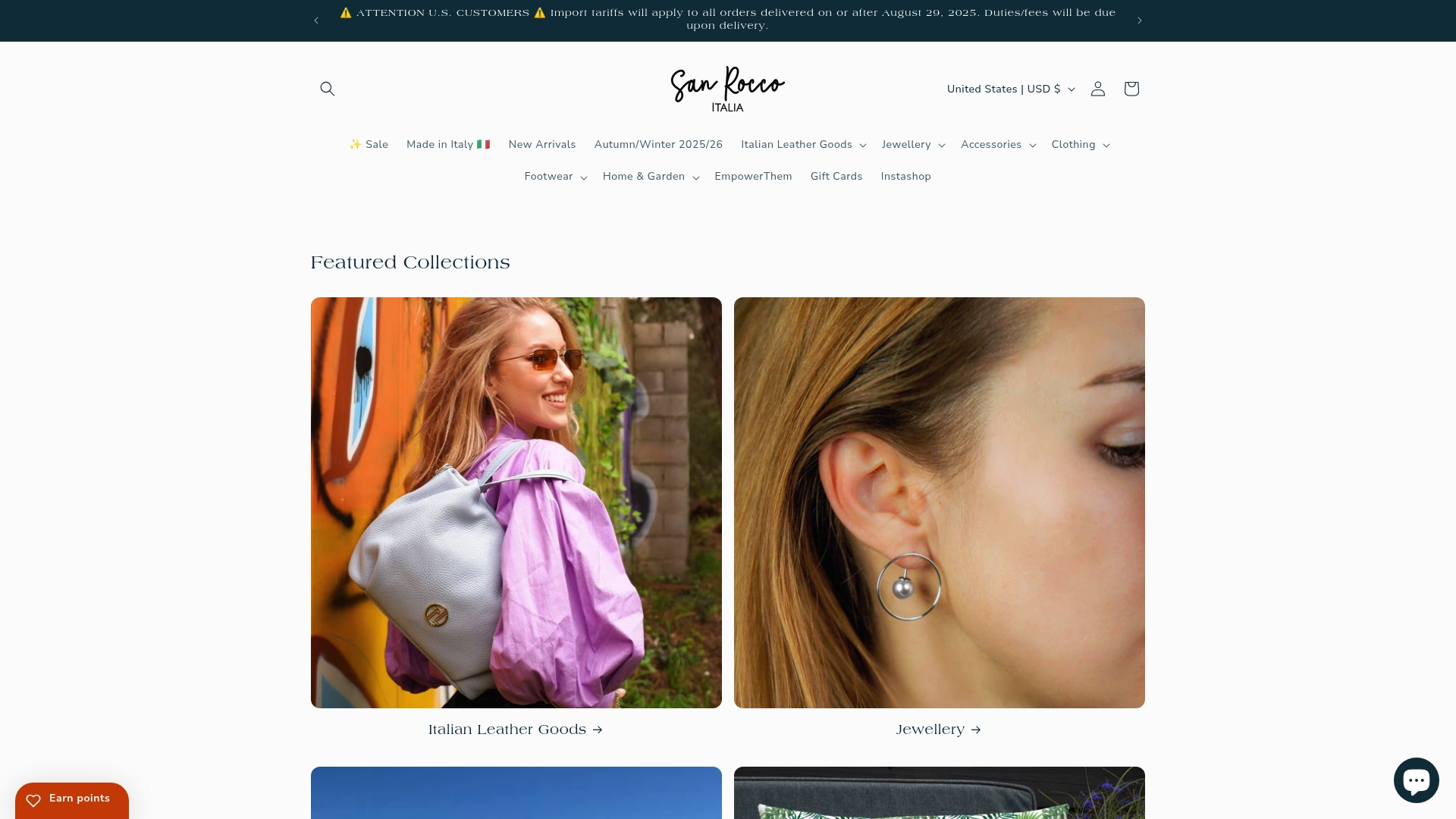
How to Read Care Labels for Luxurious Italian Fashion
Share
Caring for luxury Italian fashion takes more than simple washing and hoping for the best. It is surprising how many people overlook the tiny care label tucked inside a designer dress or jacket. Yet studies show even a 2 percent elastane blend can completely change the way a garment must be washed and dried, risking disaster if misread. There is much more at stake with these small symbols than most shoppers realise.
Table of Contents
- Step 1: Identify The Care Label Location
- Step 2: Interpret The Washing Symbols
- Step 3: Understand Drying Instructions
- Step 4: Check Ironing Guidelines
- Step 5: Review Fabric Composition Notes
Quick Summary
| Key Point | Explanation |
|---|---|
| 1. Locate the care label correctly | Check seams, waistbands, and linings for care labels that provide essential maintenance instructions for your garments. |
| 2. Decode washing symbols accurately | Understand symbols indicating machine wash or hand wash, along with temperature guidelines, to avoid damage to delicate fabrics. |
| 3. Follow precise drying instructions | Use specified methods like line drying or flat drying to maintain the shape and quality of your clothing without shrinking. |
| 4. Heed ironing guidelines strictly | Different fabrics require specific ironing temperatures; ignoring these can cause irreversible damage to your garments. |
| 5. Analyse fabric composition carefully | Different fibres have unique care needs; knowing composition helps you choose suitable maintenance routines to prolong garment life. |
Step 1: Identify the Care Label Location
Understanding how to read care labels is crucial for preserving the exceptional quality of your luxurious Italian fashion pieces. Care labels are small but mighty information sources that provide essential instructions for maintaining the integrity of your garments. These discreet tags are typically sewn into inconspicuous areas of clothing, designed to be functional yet unobtrusive.
Finding Your Care Label
Locating the care label requires a careful and systematic approach. In most Italian luxury fashion items, you will find these labels nestled in specific areas that protect the information while maintaining the garment’s aesthetic appeal. Check the following common locations:
- Inside the side seam of trousers or skirts
- Along the neckline of shirts and dresses
- Within the waistband of tailored pieces
- On the inner lining of jackets and coats
- Inside the hem of delicate items like silk scarves
When searching for the care label, use gentle fingers to explore these areas without pulling or stretching the fabric. According to fashion preservation experts, careful handling during this process is as important as reading the instructions themselves.
Some Italian designers might place labels in less conventional spots, so take your time and examine the garment thoroughly. High-end fashion brands often integrate care labels seamlessly to maintain the garment’s sleek appearance.
 Pro tip: If you struggle to locate the label, try holding the item up to a soft light, which can help reveal the tag’s subtle placement.
Pro tip: If you struggle to locate the label, try holding the item up to a soft light, which can help reveal the tag’s subtle placement.
Once you find the care label, prepare to decode its unique language of symbols and instructions. This initial step sets the foundation for proper garment maintenance, ensuring your Italian fashion investment remains pristine and elegant for years to come.
Below is a checklist table to help you confirm the correct handling of each care aspect described in the article.
| Care Step | Key Actions to Check | Common Pitfalls to Avoid |
|---|---|---|
| Locate Care Label | Check seams, linings, and waistbands | Overlooking hidden or unconventional sites |
| Decode Washing Symbols | Identify correct washing method and temperature | Misreading hand wash vs machine wash |
| Follow Drying Instructions | Use correct method: line, flat, or tumble drying | Ignoring heat settings or dry in sunlight |
| Check Ironing Guidelines | Set iron temperature according to symbol | Ironing when symbol warns against it |
| Review Fabric Composition Notes | Note percentages of fibres and special treatments | Missing small percentages of elastane |
Step 2: Interpret the Washing Symbols
Decoding washing symbols is an essential skill for preserving the exquisite quality of your Italian luxury fashion pieces. These small graphic symbols represent a universal language of textile care, providing critical instructions that can mean the difference between maintaining your garment’s pristine condition or accidentally causing irreversible damage.
Deciphering the Symbol Language
According to international textile standards, care labels use standardized symbols that communicate precise washing, drying, ironing, and bleaching instructions. Understanding these symbols requires careful observation and knowledge.
The washing tub symbol is your primary guide. A square tub with a single line underneath indicates machine washing is acceptable, while multiple lines suggest specific water temperature or wash cycle requirements. A hand inside the tub signals hand washing only, a critical distinction for delicate Italian silk blouses or intricate knitted pieces.
Pay close attention to additional symbols surrounding the washing tub. A crossed-out tub means do not wash the garment under any circumstances. Temperature indicators within the tub suggest the maximum water temperature safe for the fabric. Typically, these appear as numbers (30, 40, 50, 60) representing degrees Celsius.
Symbols adjacent to the washing instructions provide supplementary guidance. A triangle indicates bleaching recommendations. An empty triangle means any bleach is safe, while a crossed-out triangle warns against bleach usage. Dry cleaning symbols (a circle) inform whether professional cleaning is required and what specific treatments the fabric can withstand.
Remember that Italian luxury fashion often features delicate materials requiring meticulous care. When in doubt, err on the side of gentleness. A conservative approach to washing can significantly extend the life of your cherished garments. If a symbol seems ambiguous, consider consulting a professional dry cleaner specializing in high-end fashion or contact the garment’s manufacturer directly for precise instructions.
Step 3: Understand Drying Instructions
Drying instructions represent a critical aspect of maintaining the integrity of your luxurious Italian fashion pieces. These symbols communicate precise methods to preserve fabric quality, prevent shrinkage, and ensure your garments retain their original shape and elegance.
According to international textile care guidelines, drying symbols provide nuanced guidance that goes far beyond simple wet or dry recommendations. The square drying symbol serves as your primary roadmap for appropriate garment care.
A square with a circle inside indicates tumble drying is acceptable, but pay attention to the number of dots within the circle. One dot suggests low heat, two dots recommend medium heat, while three dots signal high heat settings. A crossed-out circle means absolutely no tumble drying. These subtle variations can mean the difference between preserving a delicate silk blouse and rendering it unwearable.
For more delicate Italian fashion pieces, look for horizontal lines within the square. A single horizontal line recommends line drying, where you hang the garment to air dry naturally. Two horizontal lines indicate flat drying, which means laying the item flat on a clean towel to prevent stretching. Diagonal lines crossing through the square warn against any mechanical drying process.
Some Italian designers incorporate additional symbols indicating specific drying precautions. A curved line might suggest hanging to dry in the shade, protecting vibrant colors and delicate fabrics from direct sunlight. A downward-pointing arrow could recommend drip drying, allowing water to naturally eliminate excess moisture without mechanical intervention.
When handling luxury Italian fashion, always default to the most conservative drying method. If uncertain, opt for natural air drying at room temperature. Avoid direct heat sources like radiators or sunlight, which can cause fabric distortion or color fading. Invest in mesh drying racks or clean, white towels to support delicate items during the drying process, ensuring your cherished pieces maintain their original shape and quality.
Step 4: Check Ironing Guidelines
Ironing instructions represent a nuanced art form in preserving the impeccable appearance of Italian luxury fashion. These symbols communicate precise temperature and technique requirements that can transform a wrinkled garment into a perfectly pressed masterpiece or potentially cause irreversible fabric damage.
According to international textile standards, the iron symbol is your definitive guide to fabric care. The iron symbol typically appears as a simple iron outline with subtle variations that convey critical information. These dot markings inside the iron are not decorative but serve as a precise temperature gauge for your specific garment.
One dot within the iron symbol indicates low temperature suitable for delicate synthetic fabrics and silk. This setting requires the gentlest touch, with your iron set to its lowest heat and preferably using a protective cloth as a barrier. Two dots recommend a medium temperature appropriate for wool and most synthetic blends, allowing careful pressing without risking fabric scorching. Three dots signal high temperature, typically reserved for robust natural fibers like cotton and linen.
A crossed-out iron symbol is perhaps the most critical instruction. This means absolutely no ironing, a warning commonly found on delicate Italian silk scarves, intricate knitted pieces, or garments with special finishes. Ignoring this symbol could result in permanent fabric damage, melting synthetic fibers, or destroying intricate embellishments.
For luxury Italian fashion, consider additional contextual clues. Some labels might recommend ironing inside out to protect external fabric surfaces or suggest using steam at a specific distance. Professional tip: Always test an inconspicuous area first if you are uncertain about a garment’s heat tolerance. Keep your iron clean, use distilled water to prevent mineral buildup, and move the iron smoothly to avoid creating unwanted creases or shine marks.
Remember that each Italian fashion piece tells a unique story through its fabric and construction. Treating ironing as a precise, respectful process ensures your garments maintain their original elegance and structural integrity.
Step 5: Review Fabric Composition Notes
Understanding the fabric composition of your Italian luxury fashion is crucial for implementing precise care techniques. Fabric composition notes provide a detailed roadmap for maintaining the unique characteristics of each garment, revealing insights into its potential durability, maintenance requirements, and potential vulnerabilities.
According to textile research experts, fabric composition goes far beyond simple material listings. The percentage and combination of fibers determine how a garment will respond to cleaning, drying, and general wear. Natural fibers like silk, wool, and cotton behave differently from synthetic materials such as polyester or elastane.
Begin by examining the percentage breakdown of materials. A composition reading of 100% silk suggests an entirely different care approach compared to a blend of 60% wool and 40% polyester. Pure natural fibers often require more delicate handling, while synthetic blends might offer more resilience and easier maintenance.
Pay special attention to percentages of elastane or spandex, even in small amounts. Even 2% elastane can significantly impact a garment’s care requirements. These elastic fibers provide stretch and shape retention but can be sensitive to high temperatures and aggressive washing techniques. A wool sweater with 5% elastane might need gentler treatment than a pure wool garment.
Look for additional composition details that might indicate special treatments or finishes. Terms like ‘mercerized cotton’ or ‘pre-shrunk’ suggest specific manufacturing processes that affect the fabric’s care instructions. Luxury Italian fashion often incorporates sophisticated fabric treatments that require nuanced maintenance.
Consider creating a small reference guide for yourself, noting the specific care requirements for different fabric compositions in your wardrobe. This personalized approach allows you to quickly reference the optimal cleaning and maintenance techniques for each unique piece.
The following table compares several types of fabric compositions highlighted in the article, summarising their main characteristics and care requirements.
| Fabric Composition | Key Characteristics | Typical Care Instructions |
|---|---|---|
| 100% Silk | Highly delicate, luxurious, smooth finish | Gentle hand wash, low temp, avoid wringing |
| Wool Blend (e.g. 60/40) | Warm, structured, can pill or shrink | Mild detergent, flat dry, cool iron |
| With Elastane (e.g. 2-5%) | Adds stretch/shape retention, sensitive fibre | Low temp wash, avoid high heat when drying |
| 100% Cotton | Breathable, strong, may shrink | Machine wash with similar colours, iron warm |
| Polyester Blend | Durable, less prone to wrinkles | Machine washable, low/medium iron |
| Special Finishes | May be pre-shrunk, mercerised, or coated | Check label for specifics, usually gentle |
 Remember that fabric composition is not just a technical detail but a key to preserving the longevity and appearance of your cherished Italian fashion investments.
Remember that fabric composition is not just a technical detail but a key to preserving the longevity and appearance of your cherished Italian fashion investments.
Elevate Your Care Routine with Authentic Italian Craftsmanship
Are you determined to keep your Italian luxury handbags and accessories in pristine condition by following care label instructions, but worried about damaging premium materials or losing their elegant appeal? We understand that decoding care symbols and fabric composition is vital, especially when you are committed to preserving investment pieces crafted by skilled artisans. At San Rocco Italia, our collection reflects a passion for timeless design and impeccable quality, so every detail matters when caring for your treasured items.

Treat your wardrobe to the excellence it deserves. Explore our range of handcrafted full-grain leather handbags and accessories, each accompanied by clear care guidance and trusted authenticity. Start your journey to lasting luxury by visiting San Rocco Italia’s boutique selection today. Choose craftsmanship and care that stand the test of time—now is the perfect moment to invest in longevity for your cherished Italian fashion.
Frequently Asked Questions
How can I find the care label on my Italian fashion piece?
Look for the care label in common locations such as the side seam of trousers, neckline of shirts, waistband of tailored pieces, inner lining of jackets, or inside the hem of delicate items like silk scarves. Use gentle fingers to explore without stretching the fabric.
What do the washing symbols on care labels mean?
Washing symbols provide crucial instructions for garment care. A washing tub symbol indicates machine wash, while a hand inside the tub means hand wash only. Additional markings suggest temperature limits and whether bleaching is safe. Always consult these symbols to avoid damaging delicate fabrics.
How should I dry my luxurious Italian garments?
Drying instructions, represented by square symbols, indicate the appropriate methods. A circle inside a square allows tumble drying, with dots indicating heat settings. A crossed-out circle means no tumble drying, while horizontal lines suggest line drying or flat drying techniques to maintain fabric integrity.
What should I consider when ironing elegant Italian fashion?
Ironing guidelines are represented by an iron symbol with dots denoting temperature settings: one dot for low heat, two for medium, and three for high. A crossed-out iron symbol indicates no ironing is allowed. Always follow these instructions to prevent damage to delicate fabrics.
Recommended
- Understanding Why Choose Made in Italy for Quality Style – San Rocco Italia
- Understanding Italian Leather Craftsmanship: Timeless Quality – San Rocco Italia
- Understanding How Italian Leather is Made: A Comprehensive Guide – San Rocco Italia
- Understanding the Benefits of Italian Leather Quality – San Rocco Italia
- What is Slow Fashion? Understanding Sustainable Choices – Be Juliet
- Understanding Key Terms for Women’s Fashion Explained – DARK Femme


